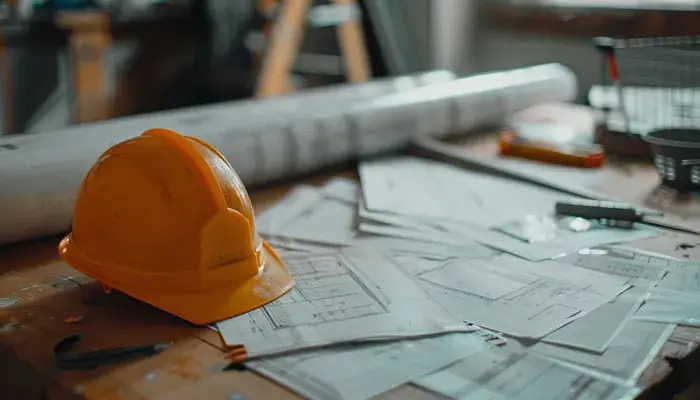Summary: Welcome to our guide on commissioning reports in the construction industry. This step-by-step overview explains the commissioning procedure and the importance of commissioning documentation. Whether you’re involved in a new construction project or managing an existing building, commissioning ensures the facility operates efficiently and meets the owner’s expectations. It is critical during construction to align project performance with the owner’s goals and long-term functionality. The focus is on validating that systems are correctly installed, tested, and optimized.
Commissioning Documents: Essential Components for Project Success
Commissioning documents play a crucial role in the commissioning process (Cx), offering structured guidelines for ensuring new construction projects meet required standards. These documents outline the design, operation, and maintenance expectations, ensuring systems perform as intended.
- Commissioning Plan: Defines the scope, timelines, system testing protocols, and the roles of the commissioning team.
- Specifications and Checklists: Ensure that systems meet design standards and provide a framework for verifying system functionality.
- Reports and Performance Reviews: Summarize performance criteria and document findings from the design and construction phases, ensuring the project meets quality expectations of Commissioning Report in Construction.
The Commissioning Process
Commissioning ensures that all systems in a building are properly designed, installed, tested, and maintained according to the owner’s project requirements. This process ensures that buildings function efficiently, enhancing occupant comfort and reducing long-term operational costs.
- Planning: The commissioning plan, developed at the start, serves as a roadmap outlining tasks, expected outcomes, and responsibilities.
- Commissioning Team: This includes the owner or their representative, project manager, commissioning manager, specialists, and contractors. Their collaborative goal is to ensure the building meets performance standards.
- Design and Construction Phases: Commissioning activities are integrated into both phases, ensuring alignment with the owner’s requirements and preventing costly rework.
- Commissioning Activities: These include system testing, performance reviews, and documentation, allowing issues to be resolved during construction.
How can you simplify complex commissioning documentation?
Optimize reporting with a digital software solution.
Building Commissioning
Building commissioning guarantees that all systems and components perform as intended. It involves reviewing design and construction documents, conducting thorough tests, and documenting recommendations for future improvements. The ultimate goal is to meet the owner’s project requirements while improving comfort, reducing energy consumption, and addressing issues proactively.
Construction Commissioning
Construction commissioning focuses on verifying that systems are correctly installed during construction. This involves reviewing documents, inspecting installations, and conducting performance tests to ensure systems function as expected. Any deficiencies are addressed before project completion to ensure smooth operation.
Commissioning Reports
Commissioning reports document the entire process, summarizing activities, test results, and any encountered challenges. These reports are valuable resources for future maintenance and troubleshooting, providing a detailed overview of system performance and areas for improvement.
Step-by-Step Commissioning Guide
- Development of the Commissioning Plan: This plan outlines objectives, scope, and team responsibilities from the project’s outset.
- Design Phase Commissioning: Ensures that the design aligns with project requirements, including document reviews and strategy updates.
- Construction Phase Commissioning: Confirms that systems are installed and tested per specifications, including inspections and performance tests.
- Continuous Commissioning: Throughout the building’s lifecycle, ongoing inspections and testing ensure long-term performance of Commissioning Report in Construction.
Checklist Importance in Commissioning
- Review the commissioning specifications and requirements.
- Develop a plan and schedule for the commissioning process.
- Identify the team members involved in commissioning and their roles.
- Review design documents to ensure they align with the commissioning requirements.
- Meet with the project team to discuss progress and address any issues.
- Implement a testing plan.
- Confirm that building systems and components are installed correctly.
- Perform performance tests and measurements.
- Document all test results and observations.
- Address any issues or deficiencies identified during the commissioning process.
- Prepare a Commissioning Report in Construction summarizing the activities and findings of the commissioning process.
- Conduct an occupancy evaluation to monitor ongoing performance.
- Provide training to building operators and maintenance staff.
- Update commissioning documentation as needed.
- Communicate regularly with the building owner or representative to address concerns or questions.
Project Delivery and Commissioning
Commissioning is integral to successful project delivery, ensuring that the building operates as intended. Integrating commissioning activities early, particularly during design and construction, minimizes rework and ensures the project meets performance requirements. Collaboration among the commissioning team, contractors, and owners is essential for identifying and addressing issues quickly.
Construction Quality and Commissioning
The quality of construction directly impacts commissioning success. Close monitoring of construction activities and regular communication between teams ensures adherence to design specifications and prevents performance deficiencies.
Project Completion
At project completion, the commissioning team compiles a final report that includes all test results, findings, and recommendations. This Commissioning Report in Construction serves as a vital reference for future maintenance and system optimization. Training for building operators ensures long-term success in system management.
Commissioning Outputs and Project Wrap-Up
The final commissioning report summarizes the entire process, documenting test results, issue resolutions, and recommendations for improvement. This report is essential for stakeholders and serves as a guide for future building maintenance and troubleshooting.
FAQ | Commissioning Report in Construction
What is the purpose of commissioning in construction?
It ensures that the systems and components of a building are designed, installed and operated according to the owner’s project requirements to create a comfortable environment for occupants.
Who participates in the commissioning process?
The commissioning process involves the building owner, project manager, commissioning manager, specialists and contractors.
What do commissioning checklists entail?
Commissioning checklists ensure that all necessary steps and tests are carried out during the commissioning process. They detail tasks and tests for each system or component of a building.
What is the purpose of the commission report?
The final commission report compiles all discoveries, test results, and recommendations into a document that overviews the building’s performance. It is a tool for the building owner and those involved in the project.
How does commissioning software help with the process?
It offers a hub for overseeing commissioning tasks, monitoring advancements, and producing reports. It boosts effectiveness, improves communication flow, and guarantees access to data.
Image: Adobe Stock – Copyright: © peerawat – stock.adobe.com






